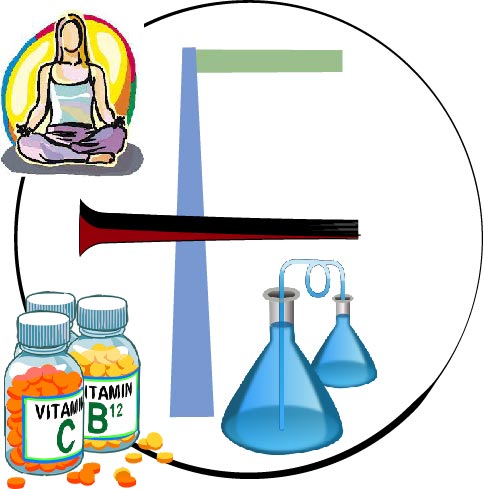
Potentiometric Titration
karl fischer titration || HPLC || GC || GMP || Method validation || QMS
What is Potentiometric Titration?
Potentiometric titration is a technique similar to direct titration, but in this, no indicator reagent is used; instead, an electrode is used as an indicator. In potentiometric titrations, a cell is used with a reference electrode, salt bridge, analyte and an indicator electrode. Generally, the electrolyte solution is used as an analyte. Hydrogen electrodes, silver chloride electrodes and calomel electrodes are generally used as reference electrodes. Indicator electrode is generally glass electrode and metal ion electrode.
Potentiometric Titration principle of Potentiometry Principle
When the pair of electrodes are placed in the sample solution or analyte, it shows the potential difference between two electrodes by the addition of the titrant or by the change in the concentration of ions.
The two electrodes are named reference electrodes and indicator electrodes. The reference electrode is the electrode that maintains its potential and remains stable when dipped into a sample solution. An indicator electrode is an electrode that responds to variation in the potential of analyte solution. A salt bridge is used to prevent interference of the analyte with the reference electrode.
The electromotive force or overall potential difference can be calculated by using the following formula –
Ecell = Eind – Eref + Ej
Where
Ecell = electromotive force of the complete cell
Eind = electromotive force of the indicator electrode
Eref = electromotive force of the reference electrode
Ej = electromotive force at the junction across the salt bridge
(Image will be uploaded soon)
The electric potential of the cell is dependent on the concentration of ions in contact with the indicator electrode, as shown in the above graph. As a result, the Ecell is measured after each titrant addition.
Potentiometric Titration Procedure
Potentiometric titration involves the measurement of the potential of an indicator electrode with respect to a reference electrode as a function of titrant volume. In this titration, we measure and record the cell potential (in millivolts or pH) after adding titrant each time. As we approach the endpoint, we start adding titrants in very small quantities. The most straightforward and most used method of endpoint detection in potentiometric titration is plotting a graph between cell potential and volume of titrant. The midpoint of the steeply rising portion of the graph or curve is estimated visually and taken as an endpoint. As it is shown below in a sample graph –
Types of Potentiometric Titration
Following four types of titrations can be performed by potentiometric titration –
Acid-base titration
Titration of HCl with NaOH can be done by potentiometric titration. This concentration of a given acid/base is determined by using a standard solution.
Redox Titration
Potentiometric titration was first used for redox titration by Crotogino. He titrated halide ions with KMnO4 using a platinum electrode and calomel electrode.
Complexometric titration
In this type of potentiometric titration concentration of metal ions are determined in the analyte. In this membrane, electrodes are used.
Precipitation Titration
In this type of titration, the precipitate is formed, as the name suggests. When the addition of the titrant no longer forms a precipitate, that point is noted as the endpoint.
Applications of potentiometric titrations
-
It is used in clinical chemistry for the analysis of metals.
-
It is used for the analysis of cyanide, ammonia etc., in water or wastewater.
-
It is used in agriculture for the detection of different elements in soils, fertilizers etc.
-
It is used in detergent manufacturing, food processing etc.
Let us look at the application of potentiometric titrations across various industries in detail.
Clinical chemistry
They are useful sensors because analytes in complexmatrices are selective for ion-selective electrodes in clinical chemistry. Analytes including sodium, potassium, calcium, hydrogen, and chlorine, as well as dissolved gases like CO₂, are commonly used.
Environmental chemistry
Environmental chemistry is used to quantify CN–, NO3, F3, and NH3 in water and wastewater.
Potentiometric titrations
To calculate the equivalence point, a potentiometric acid-base titration is used. Chemical reactions such as precipitation, acids, bases, redox processes, complexations, and also including the other chemical reactions may be titrated in both aqueous and non-aqueous solvents.
Agriculture
NO3, NH4, I, Ca, K, and CN are all elements found in soils, plant materials, feed, and fertilisers.
Detergent production
Studying the effects of calcium, barium, and fluorine in detergent manufacturing.
Potentiometry titration also available in app
- in this app we discuss of potentiometry titration
- give life example like husband and wife relationship they how to live with each other.
- what is relation of this cuple his neighborhood
Potentiometric Titration
Download app store

Pharma Interview
Download app store
Potentiometric titration Blog
Potentometry titration
by maheshbhuva | Jan 13, 2023 | Analytical Chemistry, Pharmaceutical interview,, Potentiometric Titration
Potentiometric titration
Pharma Blog
Out of specification Investigation Step in pharmaceutical
by maheshbhuva | Jun 1, 2024 | Analytical Chemistry, Out of specification, Quality control (QC)
Scope Input Martial In process stage Finish product Stability Note : Not applied in process stage which give procedure Further operation (e.g like give option in BMR if result not found as per Limit and further go operation e.g CF drying sample) Purpose: Ensure that...
Which is best solvent between Methanol vs Acetonitrile in HPLC
by maheshbhuva | May 16, 2024 | Analytical Chemistry, Hplc, Quality control (QC)
analytical method validation for pharmaceutical quality control
by maheshbhuva | May 13, 2024 | Analytical Chemistry, Analytical method development hplc,, Method validation, Quality control (QC)
Type of analytical procedure validated Identification tests. Quantitative tests for impurities' content. Limit tests for the control of impurities. Quantitative tests of the active moiety in samples of drug substance or drug product or other selected component(s) in...
Theoretical Plates chromatography-analytical chemistry
by maheshbhuva | May 4, 2024 | Hplc, Hplc column, Quality control (QC)
Theoretical Plates chromatography In chromatography, theoretical plates are a fundamental concept used to assess the separation efficiency of a chromatographic column. They play a crucial role in determining the quality and effectiveness of the chromatographic...
Type of HPLC column
by maheshbhuva | Mar 31, 2024 | Analytical Chemistry, Analytical method development hplc,, Hplc, Hplc column, Quality control (QC)
In HPLC chromatography, the column is where the separation of the sample takes place. This is where the sample is passed through the stationary phase with the mobile phase, resulting in the separation of the sample components. As the sample being analyzed is likely to...
621 no chapter chromatography was update at on date 1-dec-2022
by maheshbhuva | Jul 28, 2023 | 621 USP CHAPTER, Analytical Chemistry, Hplc
What is update change Definitions Here Definitions and chromatograms both unified and give title Definitions Give method dwell volume determine being added Definitions add definitions size-exclusion chromatography (Distribution constant, Retention time of an...
Latest pharmacopoeia
by maheshbhuva | Jul 25, 2023 | Analytical Chemistry, Hplc, Pharmaceutical interview,
USP 44-NF 39, which became official on November 1, 2021.
Type of Compartment of HPLC & GC ?
by maheshbhuva | Jul 6, 2023 | Analytical Chemistry, Hplc
HPLC Going into more detail, HPLC consists of a variety of components, including a solvent delivery pump, a degassing unit, a sample injector, a column oven, a detector, and a data processor. GC GC uses an inert or unreactive carrier gas as the mobile phase, and the...
How to Re-test defined in finish product in pharma
by maheshbhuva | Jun 6, 2023 | Analytical Chemistry, Job in pharmaceutical companies, stability
In the pharmaceutical industry, a "finished product retest" refers to the process of evaluating a sample from a previously manufactured and packaged pharmaceutical product to assess its quality, safety, and efficacy. The purpose of the retest is to ensure that the...
HPLC Blog
Which is best solvent between Methanol vs Acetonitrile in HPLC
Theoretical Plates chromatography-analytical chemistry
Hplc, Hplc column, Quality control (QC)
Theoretical Plates chromatography In chromatography, theoretical plates are a fundamental concept used to assess the separation efficiency of a chromatographic column. They play a crucial role in determining the quality and effectiveness of the chromatographic...
Type of HPLC column
Analytical Chemistry, Analytical method development hplc,, Hplc, Hplc column, Quality control (QC)
In HPLC chromatography, the column is where the separation of the sample takes place. This is where the sample is passed through the stationary phase with the mobile phase, resulting in the separation of the sample components. As the sample being analyzed is likely to...
621 no chapter chromatography was update at on date 1-dec-2022
621 USP CHAPTER, Analytical Chemistry, Hplc
What is update change Definitions Here Definitions and chromatograms both unified and give title Definitions Give method dwell volume determine being added Definitions add definitions size-exclusion chromatography (Distribution constant, Retention time of an...
Latest pharmacopoeia
Analytical Chemistry, Hplc, Pharmaceutical interview,
USP 44-NF 39, which became official on November 1, 2021.
Type of Compartment of HPLC & GC ?
HPLC Going into more detail, HPLC consists of a variety of components, including a solvent delivery pump, a degassing unit, a sample injector, a column oven, a detector, and a data processor. GC GC uses an inert or unreactive carrier gas as the mobile phase, and the...

